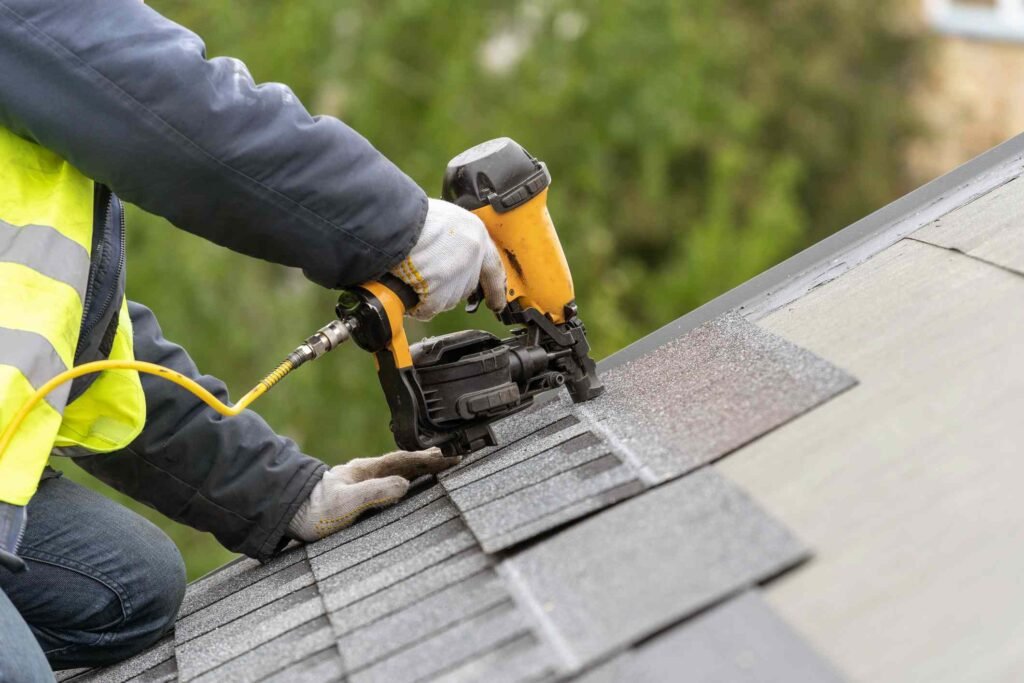To fix a leaky roof, first contain the water inside, then inspect for damaged shingles, flashing, or vent boots. Replace missing shingles, seal small cracks, or install new flashing as needed. Use roofing cement and underlayment for secure fixes. Call pros if leaks are recurring or structure is damaged.
How do I fix a leaky roof?
To fix a leaky roof, identify the source of the leak and address it using appropriate materials such as new shingles, flashing, or sealant. The first step is always to contain interior water damage using buckets or plastic sheeting and then proceed with a thorough inspection.
Leaks rarely occur directly above the visible water damage. Water often travels along rafters or sheathing before dripping. Immediate actions include removing wet insulation, draining bulging ceilings, and using tarps to prevent more damage.
Once you locate the general area, inspect for damaged shingles, cracked flashing, or worn vent boots all common leak points.
How to locate the roof leak accurately
Interior inspection
Start in the attic or top floor and look for:
- Dark stains or damp insulation
- Moisture trails along rafters
- Mold or mildew around vents and skylights
Use a flashlight to detect water glistening on wood surfaces. In colder regions, check that condensation isn’t being mistaken for leaks.
Exterior inspection
On the roof, check for:
- Missing or curled shingles
- Cracked flashing near chimneys, walls, and valleys
- Broken seals around skylights, pipe boots, or vents
- Damaged drip edge along eaves
If climbing the roof isn’t safe, use binoculars from the ground or arrange a roof inspection.
How to repair roof leaks: Step-by-step
Tools and safety gear
- Roofing nails, adhesive, sealant
- Replacement shingles or flashing
- Ladder, gloves, non-slip shoes
- Safety harness and goggles
Small leak repairs
1. Nail holes or minor cracks: Apply roofing cement or waterproof sealant.
2. Missing shingles:
- Lift surrounding shingles
- Remove the damaged one
- Install new shingle and seal edges with roofing cement
3. Flashing repair: Use polyurethane sealant or replace the flashing if corroded.
Fixing the drip edge
What is a drip edge on a roof?
It’s a metal flashing at the edges that prevents water from soaking into the fascia. To repair it:
- Remove the damaged section
- Slide in a new strip under the shingles
- Nail and seal all seams with roofing cement
When to patch and when to replace
Patching is enough when:
- The roof is under 15 years old
- Damage is isolated (1–2 shingles or one flashing area)
- No structural sagging or rot is present
Replacement is better if:
- Leaks are recurring
- Shingles are aged, brittle, or missing granules
- The deck is soft, moldy, or sagging
- The roof is over 20 years old
How often to replace a roof depends on material: asphalt lasts 15–20 years, metal lasts 40–70 years. If your home shows signs of age and damage, consult a roof repair for storm and wind damage expert.
Pros and cons of DIY roof repair
Pros
- Lower cost: Most small repairs cost under $100
- Immediate action: No need to wait for a contractor
- Educational: Learn the basics of your roof system
Cons
- Safety risk: Falls and injuries are common
- Warranty voids: Manufacturers may not honor DIY work
- Incomplete fixes: Surface sealing may ignore deeper problems
- Structural risk: Incorrect installation can worsen damage
Complex issues should be handled by professionals.
Preventing future leaks
1. Schedule yearly inspections
Have a professional check for loose shingles, flashing gaps, and nail exposure at least once a year. Use roof inspections to detect early issues.
2. Clean gutters
Clogged gutters lead to water backup. Clean them at least twice a year to prevent water from pooling under shingles.
3. Monitor flashing and boots
Replace worn or cracked flashing and pipe boots every 7–10 years to maintain seals.
4. Check attic for early signs
Look for:
- Damp insulation
- Dripping noises during rain
- Watermarks on roof deck sheathing
5. Trim trees
Branches scraping shingles or falling during storms cause punctures and tears. Keep them trimmed 6–10 feet away from your roof.
6. Repair storm damage immediately
Use roof repair for storm and wind damage after severe weather to check for hidden issues.
FAQs about roof leak repair
Can I fix a roof leak from the inside?
Yes, temporarily. Use caulk or roofing tape in the attic to stop water until exterior repairs are complete.
How much does it cost to repair a leak?
Typical costs range from $150 to $700, depending on severity and materials.
Will insurance cover roof leak repairs?
Sometimes. Insurance usually covers storm-related damage, not wear and tear or neglect.
What causes most roof leaks?
The most common causes are:
- Broken shingles
- Cracked flashing or pipe boots
- Clogged gutters
- Poor installation or old age
For more technical details and visuals, refer to Family Handyman’s roof repair guide.


